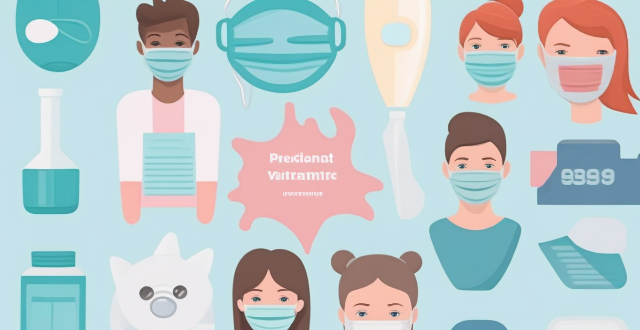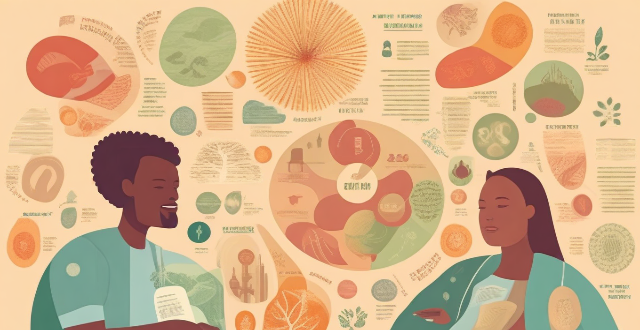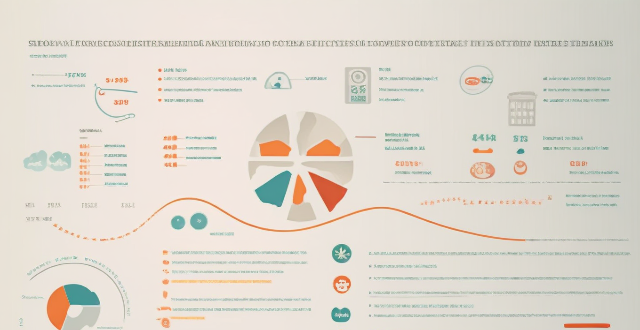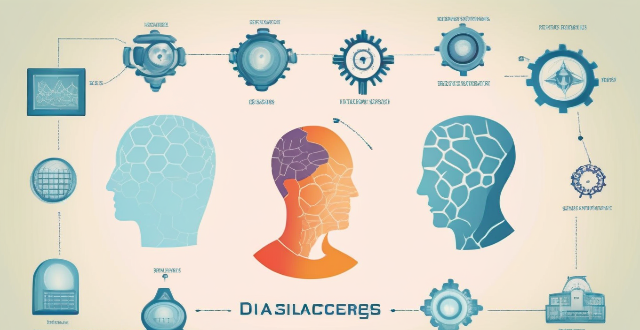Prevent Spread

How does proper handwashing technique prevent the spread of germs ?
Proper handwashing is a simple yet effective way to prevent the spread of germs. It involves using soap and water to clean your hands thoroughly, especially before eating or preparing food, after using the restroom, and after being in contact with someone who is sick. The key points on how proper handwashing technique can help prevent the spread of germs include: - Wet your hands with clean, running water (warm or cold), turn off the tap, and apply soap. - Lather your hands by rubbing them together with the soap. Be sure to lather the backs of your hands, between your fingers, and under your nails. - Scrub your hands for at least 20 seconds. Need a timer? Hum the "Happy Birthday" song from beginning to end twice. - Rinse your hands well under clean, running water. - Dry your hands using a clean towel or air dry them. By following these steps, you can effectively remove dirt, viruses, and bacteria from your hands, which can help prevent the spread of germs that cause infections like the common cold and flu. Additionally, proper handwashing technique can also help prevent the spread of more serious illnesses such as COVID-19, Ebola, and norovirus.

How does social distancing help prevent the spread of COVID-19 ?
Social distancing is a crucial measure in preventing the spread of COVID-19 by reducing contact with infected individuals, slowing down the virus's spread, decreasing case numbers, and flattening the curve.

Can asymptomatic individuals spread COVID-19 ?
Asymptomatic individuals can spread COVID-19, making preventive measures crucial.

How can we prevent the spread of virus variants ?
To prevent the spread of virus variants, a multifaceted approach is necessary, including vaccination, regular testing and isolation, public health measures such as mask-wearing and physical distancing, travel restrictions and quarantine, research and surveillance, and community action. Staying up-to-date with boosters and improving indoor ventilation can also help maintain protection against new variants.

What role does anthropogenic activity play in the emergence and spread of viruses ?
This text discusses the role of human activities in the emergence and spread of viruses, highlighting deforestation, urbanization, agricultural practices, and global travel as significant contributors. It suggests actions to mitigate these effects, such as protecting natural habitats and promoting sustainable agriculture, and emphasizes the need for improved public health infrastructure and responsible travel practices.

How does climate change contribute to the spread of infectious diseases ?
Climate change contributes to the spread of infectious diseases by increasing temperature and humidity, altering vector habitats, causing extreme weather events, and promoting urbanization and deforestation. These factors create favorable conditions for pathogens and disease vectors, disrupt sanitation systems, increase human-wildlife contact, and facilitate rapid disease spread among humans. Addressing these issues requires a comprehensive approach that includes mitigating climate change and implementing effective public health strategies.

Is social distancing a long-term solution for controlling the spread of viruses ?
Social distancing is an effective measure for controlling the spread of viruses in the short term, but its feasibility as a long-term solution depends on various factors such as the nature of the virus, availability of medical resources, and willingness of people to adhere to guidelines. Other measures such as mask-wearing, hand hygiene, contact tracing, regular testing, and vaccine development should also be considered alongside social distancing to effectively control the spread of viruses over time.

How effective are cloth masks compared to surgical masks in preventing the spread of COVID-19 ?
This article discusses the effectiveness of cloth masks compared to surgical masks in preventing the spread of COVID-19. Cloth masks are washable, reusable, and customizable, but they do not have the same level of filtration as surgical masks. Surgical masks are disposable, have a high filtration efficiency, and are designed for use by healthcare professionals during medical procedures. The choice between cloth masks and surgical masks depends on personal preference, availability, and specific circumstances. It is essential to follow guidelines from health organizations and authorities regarding the use of masks to help prevent the spread of COVID-19.

What strategies have been successful in controlling the spread of COVID-19 in other countries ?
Successful strategies in controlling the spread of COVID-19 include early detection and response through testing and contact tracing, stringent lockdown measures, public health campaigns and education, and investment in healthcare infrastructure. Examples of countries that have implemented these strategies effectively include South Korea, New Zealand, Italy, India, Singapore, Germany, and Canada. By learning from these examples, other countries can improve their own responses to the pandemic and work towards containing its spread.

What measures can be taken to prevent the spread of infectious diseases across borders ?
The text discusses measures to prevent the spread of infectious diseases across borders, including surveillance and early warning systems, travel restrictions and border controls, vaccination programs, public health infrastructure and preparedness, collaboration and information sharing, and education and public awareness. The Global Health Security Agenda (GHSA) promotes robust surveillance systems for early detection of outbreaks, while the International Health Regulations (IHR) require countries to develop core public health capacities. Travel restrictions such as entry/exit screening and quarantine policies can help prevent introduction of diseases into new regions. Vaccination programs, including routine immunization and vaccination requirements for travelers, reduce the risk of disease spread. Strong public health infrastructure and emergency response plans are crucial for containing outbreaks. Collaboration and information sharing through global health security initiatives and open access to data enable quicker identification of patterns and trends. Education and public awareness campaigns can reduce transmission rates and discourage travel to high-risk areas. By implementing these measures, countries can work together to protect public health globally.

How often should I disinfect my home to prevent the spread of germs ?
To prevent the spread of germs in your home, it's important to disinfect high-touch surfaces daily, including doorknobs, light switches, countertops, bathroom fixtures, and electronic devices. Floors and carpets should be cleaned regularly as well, with hardwood floors mopped weekly and carpets vacuumed twice a week and steam cleaned monthly. Soft furnishings like couches and chairs should be vacuumed weekly, and bedding should be washed in hot water every week. In the kitchen and eating areas, cutting boards and utensils should be washed after each use, and dishes and cups should be cleaned after each meal. Laundry, including clothes and towels, should be washed immediately after wearing or use. Children's toys should also be disinfected regularly, with plastic toys wiped down weekly and plush toys washed monthly. When disinfecting, it's important to follow the instructions on the product label, avoid mixing cleaning products, wear gloves to protect your hands, ensure proper ventilation by opening windows or turning on fans, clean before disinfecting, use paper towels to avoid cross-contamination, don't forget to clean and disinfect trash cans, and sanitize sponges and brushes regularly. By following these guidelines, you can help prevent the spread of germs within your home and maintain a healthy environment for you and your family.

What measures should be taken to prevent the spread of infectious diseases in a laboratory setting ?
In a laboratory setting, it is crucial to take measures to prevent the spread of infectious diseases. This includes wearing personal protective equipment (PPE), practicing proper hand hygiene, using biosafety cabinets for handling pathogens, and properly disposing of biohazardous waste. Regular cleaning and disinfection of surfaces and equipment is also essential, as well as following specific protocols for procedures like centrifugation and pipetting. By implementing these measures, the risk of infection can be significantly reduced.

How does climate change affect the spread of vector-borne diseases like dengue and malaria ?
Climate change has a significant impact on the spread of vector-borne diseases like dengue and malaria. The increased temperatures, changes in precipitation patterns, urbanization, deforestation, global travel, and trade all contribute to the spread of these diseases. Warmer temperatures can lead to an increase in the number of breeding sites for mosquitoes, while heavy rainfall can create temporary pools of standing water that serve as ideal breeding grounds for mosquitoes. Urbanization leads to denser human populations living in close proximity to each other, making it easier for mosquitoes to find hosts and spread diseases. Deforestation disrupts ecosystems and removes natural barriers that limit the spread of mosquitoes. Global travel allows people to carry diseases across borders, introducing new strains of viruses into areas where they were previously absent. Trade in goods and products can introduce new species of mosquitoes into areas where they were not previously found. By understanding how climate change affects these diseases, we can take steps to mitigate its effects and protect public health.

Will an iPhone screen protector prevent all scratches and cracks ?
An iPhone screen protector is a thin layer of material that is applied to the surface of an iPhone's display. It can prevent minor scratches and cracks, but it cannot prevent all damage. A high-quality screen protector can effectively prevent minor scratches from occurring on the surface of the iPhone's display. While a screen protector can help to prevent minor cracks caused by small drops or bumps, it may not be able to prevent more severe damage resulting from larger impacts or falls onto hard surfaces. Even the best screen protectors have their limitations and are not designed to withstand extreme force or repeated impacts. To maximize the lifespan of your iPhone's display, it is recommended to use a high-quality screen protector in conjunction with a protective case and to handle your device with care.

How effective is PPE in preventing the spread of airborne viruses ?
This article discusses the effectiveness of Personal Protective Equipment (PPE) in preventing airborne virus spread. It highlights the importance of different types of PPE, such as face masks, gloves, goggles/face shields, and Respiratory Protection Devices (RPDs), in reducing transmission. The article emphasizes that while these devices can be effective, their success depends on factors like type, fit, duration of use, and situation. It concludes by stating that combining various forms of PPE with proper hand hygiene practices and other infection control measures is crucial for maximum protection against airborne viruses.

What is the impact of virus variants on public health ?
Virus variants are mutations that occur in viruses, which can affect their ability to cause disease. These mutations can be beneficial or harmful to public health depending on the virus and its characteristics. The essay explores the impact of virus variants on public health and discusses some of the key factors that influence their spread and severity. The importance of virus variants is highlighted as they can change the way a virus spreads and affects people. For example, the SARS-CoV-2 virus has several variants, including the Omicron variant, which is more transmissible than previous versions. This means that it can spread more easily from person to person, leading to higher rates of infection and hospitalization. Virus variants can also affect the effectiveness of vaccines and treatments. Vaccines are designed to target specific strains of a virus, but if a new variant emerges, it may not be as effective at preventing infection or reducing symptoms. Similarly, treatments may not work as well against certain variants, making them less effective at treating infections. Factors that influence virus variants include mutation rate, population density, and environmental factors. High mutation rates make it difficult for scientists to predict how viruses will behave over time and create challenges for public health officials when trying to control outbreaks. Population density increases the likelihood that new variants will emerge and spread rapidly through a population. Environmental factors such as temperature and humidity can affect how viruses survive outside of humans and how they spread inside of them. In conclusion, virus variants can have a significant impact on public health by changing how viruses spread and affecting the effectiveness of vaccines and treatments. Understanding the factors that influence virus variants is crucial for developing strategies to prevent and control outbreaks. As we continue to learn more about these viruses, it is important to stay informed and take steps to protect ourselves and others from infection.

What measures are being taken to control the spread of virus variants ?
The emergence of virus variants is a significant concern globally. Various measures are being implemented to control their spread, including surveillance and genomic sequencing, testing and tracing, border controls and travel restrictions, vaccination efforts, public health measures, research and development, and education and messaging. These strategies aim to mitigate the impact of variants and protect populations from more severe outbreaks. It is crucial for everyone to stay informed and continue following public health guidelines to contribute to these efforts.

How can I prevent further injury while recovering from a sports injury ?
Recovering from a sports injury can be tough, but taking the right steps can prevent further harm. Here's how: 1. **Rest and Ice**: Rest to allow healing; apply ice to reduce swelling and pain. 2. **Compression and Elevation**: Use compression to reduce swelling and elevate the injured area above heart level. 3. **Gradual Return to Activity**: Work with a physical therapist and listen to your body as you gradually regain strength and mobility. 4. **Proper Gear and Technique**: Ensure you have the right gear and use proper form to prevent future injuries. 5. **Stay Hydrated and Nourished**: Drink plenty of water and eat a balanced diet to support your body's healing process.

What is the importance of virus origin tracing ?
Virus origin tracing is crucial for preventing future outbreaks, understanding transmission patterns, identifying vulnerable populations, improving surveillance systems, and promoting global health security. By understanding where and how viruses originated, scientists can develop strategies to prevent similar viruses from emerging in the future. Tracing the origin of a virus also helps us understand its transmission patterns, which is essential for developing effective prevention and control measures. Additionally, virus origin tracing can help identify vulnerable populations that may be at higher risk of infection or severe illness, allowing public health officials to target prevention and treatment efforts to those who need them most. Finally, tracing the origin of a virus can improve surveillance systems for infectious diseases and promote global health security by helping countries work together to prevent and respond to emerging threats.

What are some common threats to digital identity and how can I prevent them ?
The text discusses the threats to digital identity and how to prevent them. It outlines common threats such as phishing attacks, malware and viruses, identity theft, data breaches, and ransomware. To prevent these threats, it suggests using strong passwords, enabling two-factor authentication, keeping software up-to-date, being cautious with emails and links, monitoring online accounts, using antivirus software, securing your network, and educating yourself about cybersecurity. By taking these precautions, individuals can reduce the risk of falling victim to threats to their digital identity.

What are the most effective disinfection measures for preventing the spread of COVID-19 ?
To prevent the spread of COVID-19, practice frequent hand hygiene, cover your coughs and sneezes, clean high-touch surfaces daily, wear a mask in public settings, maintain social distancing, stay home if sick, and get vaccinated when eligible.

What are the most effective ways to prevent forest fires ?
Preventing forest fires is essential to protect ecosystems, wildlife, and human settlements. Effective strategies include proper land management like clearing dead vegetation, creating fire breaks, and controlled burning; public awareness campaigns through education programs, banning campfires, and posting fire warning signs; using advanced technology such as satellite monitoring, predictive modeling, and drone surveillance; involving the community with volunteer firefighters, reporting systems, and emergency plans; implementing regulatory measures including banning smoking in forests, enforcing building codes, and penalties for negligence; mitigating climate change by reducing emissions and adapting to new norms; and maintaining infrastructure like water sources, access roads, and communication networks. These measures can greatly reduce the risk of wildfires and safeguard both nature and people from their devastating effects.

Is it possible to accidentally disable important functionality by using hidden features in iOS, and if so, how can I prevent this from happening ?
Yes, it is possible to accidentally disable important functionality by using hidden features in iOS. To prevent this from happening, regularly back up your device, be cautious when enabling or disabling settings, research before making changes, use reputable sources, update your device regularly, and contact Apple Support if needed.

How do financial regulations prevent financial crises ?
Financial regulations help prevent crises by managing risks, promoting transparency, protecting consumers, maintaining market integrity, overseeing systemic risks, reducing moral hazard, and coordinating internationally.

Are all virus variants equally contagious ?
Are all virus variants equally contagious? The answer to this question is not straightforward. Virus variants can differ in their transmissibility, depending on various factors such as their ability to bind to host cells, their replication rate, and the immune response of the host. Some variants may be more contagious than others, while others may have a lower transmission rate. One example of a variant that has been shown to be more contagious than others is the SARS-CoV-2 Omicron variant. This variant was first detected in South Africa in November 2021 and quickly spread around the world due to its high transmissibility. The Omicron variant has also been shown to be more resistant to some vaccines than other variants, which could further increase its spread. However, it is important to note that not all virus variants are equally contagious. Even within the same species of virus, different strains can vary greatly in their transmissibility. For example, the influenza virus has many different strains, each with its own characteristics in terms of transmissibility and severity of symptoms. In conclusion, while some virus variants may be more contagious than others, it is important to remember that not all viruses are created equal when it comes to their ability to spread from person to person.

Can regular cleaning and disinfection prevent the transmission of other viruses besides COVID-19 ?
Regular cleaning and disinfection can prevent the transmission of other viruses besides COVID-19, such as those causing colds and flu. The CDC recommends routine cleaning of frequently touched surfaces to reduce the risk of infection. Effective cleaning involves using soap or detergent to remove dirt, followed by disinfecting with a product labeled for the specific virus. High-touch surfaces should be prioritized, and proper ventilation and glove use are advised. Following these practices helps create a safer environment.

How do scientists use epidemiological data to trace virus origins ?
Epidemiology is the study of how diseases spread among populations. When a new virus emerges, scientists use epidemiological data to trace its origins. This involves several steps: collection of data about the disease, analysis of data to identify patterns, genomic sequencing to determine the relationship between viruses, field investigations to gather more information, and collaboration with other scientists to build a comprehensive picture of the virus's origins. By understanding how a virus emerged and spread, scientists can develop better strategies for preventing and controlling future outbreaks.

How do paparazzi influence the spread of celebrity relationship rumors ?
Paparazzi significantly shape public perception of celebrity relationships by constantly surveilling celebrities, using invasive tactics, and promoting sensationalism over facts. They collaborate with tabloids and utilize social media to instantly disseminate information, leading to rapid rumor spreading. This relentless pursuit affects celebrities' privacy and emotional well-being, raising concerns about media ethics and privacy rights.

What are the best practices for篝火 safety to prevent uncontrolled fires ?
Fire safety is crucial when enjoying a bonfire. Here are some best practices to ensure a safe and enjoyable experience: 1. Choose the Right Location: Find a clear area away from trees, bushes, and any other flammable materials. Ensure that the fire pit or ring is made of non-flammable materials. 2. Check Local Regulations: Be aware of any local laws or regulations regarding open fires. Obtain necessary permits if required. 3. Gather Supplies: Have a fire extinguisher or a bucket of sand/water nearby. Prepare shovels and other tools for tending the fire and emergency situations. 4. Stack Wood Properly: Use dry, seasoned wood to reduce smoke and flame-ups. Build a 'log cabin' or 'teepee' structure for better airflow. 5. Light the Fire Safely: Use a match or lighter; avoid using accelerants like gasoline or lighter fluid. Light the fire from the upwind side to prevent sparks from blowing onto you. 6. Keep the Fire Small: Only build a fire as big as needed for warmth and light. Don't add too much fuel at once; keep it manageable. 7. Never Leave the Fire Unattended: Always have someone present to watch the fire. Have a plan in place for emergencies or if you need to leave temporarily. 8. Monitor Wind Conditions: Be aware of changing wind patterns that could spread sparks or embers. If conditions become unsafe, be prepared to extinguish the fire promptly. 9. Properly Extinguish the Fire: Drown the fire with water, ensuring that all embers are wet and cold to the touch. Stir the ashes and add more water until everything is completely soaked. 10. Dispose of Ashes Carefully: After the fire is completely out, allow the ashes to cool before disposal. Place ashes in a metal container and dispose of them in a proper location. 11. Clean Up the Area: Remove any trash or leftover materials from the site. Leave the area cleaner than you found it.